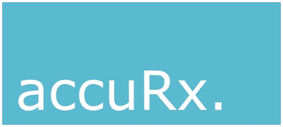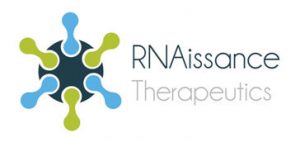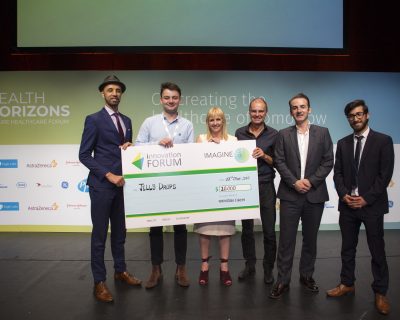Site
Select your branch
Congratulations to the IMAGINE IF! Top 15 Global Finalists!
The IMAGINE IF! accelerator platform received an overwhelming global response from large centres of scientific activity as well as emerging geographies during the application period held over April – June, with hundreds of companies undergoing evaluation.
The Top 50 companies were selected in July on the basis of the potential of their technology to improve life, living standards and human wellbeing, and were invited into an intensive mentors program with the Innovation Forum’s extensive mentorship network. The Top 15 announced below have been selected as a result of extensive company evaluation and development opportunities.
The Top 15 announced below will attend our conference as invited delegates, and are now preparing to pitch before our international investment panel for a non-dilutive cash prize of $30,000 USD, services and other benefits from the Innovation Forum network!
Congratulations to our Top 15! The profile of each company is highlighted below:
| Team [A-Z] | Location |
| AccuRx | London |
| ATS Laboratory S.A. | Krakow |
| CamSES | Cambridge |
| CustoMem | London |
| FlextraPower | New York |
| GlykoGen | Aberdeen |
| Lumigbo (formerly Taranutla) | Lausanne |
| Lymphatica | Lausanne |
| MeCURIS | Munich |
| MedEXO Robotics | Hong Kong |
| New Born Solutions | Barcelona |
| NG:Safe | Cambridge |
| Novus Life Sciences | Hong Kong |
| RNAissance Therapeutics | Cambridge |
| VisusNano | Stevenage |
AccuRx
Digital Health / Diagnostics
Antimicrobial resistance currently accounts for 700,000 global deaths annually and this is forecast to increase to 10 million by 2050. Most of modern medicine, from routine surgery to cancer treatment relies on access to effective antibiotics. As a society we need to reduce unnecessary use of antibiotics in order to prevent the development of widespread drug-resistant infections.
accuRx is a data-driven rapid diagnostic tool to eliminate inappropriate antibiotic prescribing. We’re starting in primary care and using decision support, behavioural nudges and data science to help eliminate inappropriate antimicrobial use. We’re integrating with GP software providers to provide nudges and gather data from the core clinical workflow. We’re building a patient-facing module to offer active management (as an alternative to prescribing), smart delayed prescribing and outcomes tracking. Our rapid diagnostic fuses multiple datasets including EHR, prescribing, resistance patterns and outcomes to provide an enhanced empirical diagnosis that improves in accuracy, as the underlying dataset grows.
We’re backed by Entrepreneur First, Europe’s leading startup accelerator. Our human factors design approach encompasses full workflow integration, maintaining complete clinical freedom and reducing workload. After demonstrating efficacy in primary care, we are applying our methodology to provide a data-driven rapid diagnostic in other settings including developing health economies.
ATS Laboratory S.A.
Clean Tech / Energy / New Materials
 We invented and patented a revolutionary worldwide system of transporting the aircraft at the aerodrome: www.airplane-system.pl/en
We invented and patented a revolutionary worldwide system of transporting the aircraft at the aerodrome: www.airplane-system.pl/en
Cambridge Solar Environmental Solutions (CamSES) Ltd
Clean Tech / Energy /New Materials
 Governments, development agencies, and non-profit organizations have made significant investments in water infrastructure, yet water scarcity and contamination remain widespread in developing countries. This causes both socioeconomic and health burdens. Globally, waterborne diseases are a leading cause of death among children under five, killing more infants than HIV/AIDS, malaria, and tuberculosis combined.
Governments, development agencies, and non-profit organizations have made significant investments in water infrastructure, yet water scarcity and contamination remain widespread in developing countries. This causes both socioeconomic and health burdens. Globally, waterborne diseases are a leading cause of death among children under five, killing more infants than HIV/AIDS, malaria, and tuberculosis combined.
CamSES aims to address these issues through its patented photocatalytic nanoparticles that enable unprecedentedly fast and effective water treatment using naturally available sunlight. This not only offers a new, efficient, and environmentally friendly approach to water treatment, but fits well with the developing world market because of low manufacturing costs, ease of use, independence from a power supply, and excellent potential to remove organic pollutants, toxins, and infectious agents.
CamSES will help local businesses set up water purification and vending stores in water- stressed areas (initially in Tanzania). Vendors can use the filtration system to cost-effectively turn virtually any water source into clean potable water. In other markets similar community- focussed approaches have been successful in providing premium quality water to people from all income levels. CamSES aims to share revenue with the vending stores and use profits to set up more businesses. Through this exponential effect CamSES believes it can provide a real solution to water problems worldwide.
CustoMem
Clean Tech / Energy / New Materials
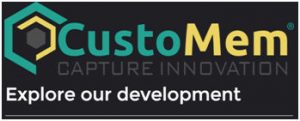 Significant proportions of available freshwater are unavailable due to hazardous micropollutants left after current wastewater treatment methods. This leads to increasing water stress, which will affect 47% of the world’s population by 2030. Within the world’s 2nd most polluting industry, the textile industry, vast volumes of water produced contain hazardous micro-pollutants including heavy metals. The micropollutants escape through the current treatment plants due to their small size and chemical properties. Through a low-energy low-cost scalable biological process, CustoMem produces a novel membrane that can selectively capture and potentially recycle micropollutants including heavy metals.
Significant proportions of available freshwater are unavailable due to hazardous micropollutants left after current wastewater treatment methods. This leads to increasing water stress, which will affect 47% of the world’s population by 2030. Within the world’s 2nd most polluting industry, the textile industry, vast volumes of water produced contain hazardous micro-pollutants including heavy metals. The micropollutants escape through the current treatment plants due to their small size and chemical properties. Through a low-energy low-cost scalable biological process, CustoMem produces a novel membrane that can selectively capture and potentially recycle micropollutants including heavy metals.
Releasing said micropollutants has had such a deleterious effect that the Chinese government imposed in 2015 daily fines of $1000 to dyehouses that do not adhere to the heightened regulations. CustoMem enables customers to adhere to increasing governmental wastewater standards. As a UK pilot project, we have partnered with, elentec, a UK water treatment company on removing heavy-metals in contaminated water from an old metal mining site in Wales. Once we complete our pilot plant treatment with elentec, we will formalize our discussions to treat industry water effluent from textile manufacturers that supply textile to fashion brands from the Zero Discharge of Hazardous Chemicals industry group.
FlextraPower, Inc. Bonbouton Smartclothes
Digital Health / Medical Device / Platform Technology
 Flextrapower introduces the cutting-edge sensing technology to everyday wear in the normal clothes form factor so our user can make a wiser decision about their health and lifestyle. Our first product line, Bonbouton, the smart clothes that allow the user to collect their vital health information including body temperature, breathing rate and heart rate employing our propriety graphene sensor into fabric thread. Bonbouton helps parents to keep track of their child’s low-grade fever directly from our smart phone app or via a web browser. In another example, Bonbouton helps a woman to automatically collect the body temperature during her sleep and subsequently correlate with personal ovulation cycle.
Flextrapower introduces the cutting-edge sensing technology to everyday wear in the normal clothes form factor so our user can make a wiser decision about their health and lifestyle. Our first product line, Bonbouton, the smart clothes that allow the user to collect their vital health information including body temperature, breathing rate and heart rate employing our propriety graphene sensor into fabric thread. Bonbouton helps parents to keep track of their child’s low-grade fever directly from our smart phone app or via a web browser. In another example, Bonbouton helps a woman to automatically collect the body temperature during her sleep and subsequently correlate with personal ovulation cycle.
Our smartphone app is designed to connect with the hardware, in the form of a button, via Bluetooth Low Energy for data transmission and work with Apple HealthKit, Google Fit or third party health app. We worked closely with several fashion brand partners by supplying sensor to their apparel manufacturing factory and the co-branded merchandise can utilize partner’s distribution channel. The founding team members have a wide range of expertise from nanomaterial science to international fashion brand licensing. We continue to grow our team in various aspects including software, hardware, industrial design and business development.
GlykoGen
Therapeutic / Diagnostic
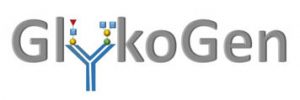 GlykoGen is developing anti-glycan antibodies using a novel and innovative process to meet a significant need in cancer therapy. We are continuing to develop our novel and superior method for anti-glycan monoclonal antibody generation. We will commercialize this innovation by generating a diverse suite of more specific and higher quality antibodies than those currently on the market for cancer diagnosis and therapy, specifically targeting cancers where there is an unmet clinical need such as pancreatic cancer.
GlykoGen is developing anti-glycan antibodies using a novel and innovative process to meet a significant need in cancer therapy. We are continuing to develop our novel and superior method for anti-glycan monoclonal antibody generation. We will commercialize this innovation by generating a diverse suite of more specific and higher quality antibodies than those currently on the market for cancer diagnosis and therapy, specifically targeting cancers where there is an unmet clinical need such as pancreatic cancer.
Lumigbo (previously Tarantula)
Therapeutic / Medical Device / Platform Device
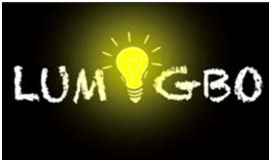 Every day more than 1 million implants are placed into human and animal bodies using open surgery. Lumigbo has developed a technology to build up implants inside the body using an access channel of less than half a millimetre in diameter. The procedure can be used for almost any type of implant. We have developed minimally viable prototypes for neurovascular, orthopaedic and dental applications. Currently, we are improving our prototypes and putting in place the company structure. We expect to close financing round A in the third quarter of 2017.
Every day more than 1 million implants are placed into human and animal bodies using open surgery. Lumigbo has developed a technology to build up implants inside the body using an access channel of less than half a millimetre in diameter. The procedure can be used for almost any type of implant. We have developed minimally viable prototypes for neurovascular, orthopaedic and dental applications. Currently, we are improving our prototypes and putting in place the company structure. We expect to close financing round A in the third quarter of 2017.
Lymphatica
Medical Device
 Lymphatica is an early stage medical device startup project based on the patented design of a novel implantable system to replace lymphatic vessel draining function, which it plans to produce and market. The system is based on magnetically-controlled micropumps and anti-fibrotic catheters and it has been conceived to treat chronic lymphedema. Lymphedema is a common side effect of cancer therapies that causes chronic swelling of the limbs, pain and recurrent infections, leading to a state of chronic disability. More than 100 million people are struggling with lymphedema around the world, but no effective treatment has been developed: lymphedema is a clear unmet medical need. Our product, LymphoDrain™, is the first artificial, implantable lymphatic vessel, which represents the first effective solution for lymphedema.
Lymphatica is an early stage medical device startup project based on the patented design of a novel implantable system to replace lymphatic vessel draining function, which it plans to produce and market. The system is based on magnetically-controlled micropumps and anti-fibrotic catheters and it has been conceived to treat chronic lymphedema. Lymphedema is a common side effect of cancer therapies that causes chronic swelling of the limbs, pain and recurrent infections, leading to a state of chronic disability. More than 100 million people are struggling with lymphedema around the world, but no effective treatment has been developed: lymphedema is a clear unmet medical need. Our product, LymphoDrain™, is the first artificial, implantable lymphatic vessel, which represents the first effective solution for lymphedema.
Lymphatica is a spin-off from the Federal Institute of Technology of Lausanne (EPFL). The underlying technology was developed in the Laboratory of Lymphatic and Cancer Bioengineering where the founders, Marco Pisano and Valentina Triacca, obtained their doctoral degree. Prof. Lucia Mazzolai, head of the Angiology Service at the University Hospital of Lausanne (CHUV), joined the project and brings her clinical perspective to the team. The Swiss Commission of Technology and Innovation (CTI) is currently supporting the project through a feasibility study grant. The company incorporation is planned for May 2017.
MeCURIS
Medical Device
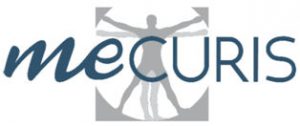 Currently the majority of prescribed prostheses and orthoses (so-called patient aids) come “out of the box”, and lacks the personalised fitting an orthopaedic technician/certified prosthetist orthotist (CPO) used to provide in the past. The result is an increasing number of complications, e.g. decubitus (pressure sores) underneath bad-fitting braces/orthoses. Besides, prosthetics usually do not come with the personalized look and feel patients expect from such a permanent patient aid.
Currently the majority of prescribed prostheses and orthoses (so-called patient aids) come “out of the box”, and lacks the personalised fitting an orthopaedic technician/certified prosthetist orthotist (CPO) used to provide in the past. The result is an increasing number of complications, e.g. decubitus (pressure sores) underneath bad-fitting braces/orthoses. Besides, prosthetics usually do not come with the personalized look and feel patients expect from such a permanent patient aid.
Mecuris fills the gap between mass production and manually produced individual patient aids, e.g. with perfectly fitting orthotics by directly processing CT data from the patient hospitals. Prosthetics are highly customized according to patient’s preferences in functionality and design.
MedEXO Robotics
Digital Health / Medical Device / Platform Technology
 There are over 10,000 people in the HK with Parkinson’s disease (PD) and even more than 10 millions people suffering the same disease all over the world. People with Parkinson’s are often suffering from tremor, rigidity and bradykinesia which hinder their mobility and affect their daily life. As a solution, we would like to break through these current restrictions and develop low cost, multipurpose exoskeleton devices that are still affordable by the public.
There are over 10,000 people in the HK with Parkinson’s disease (PD) and even more than 10 millions people suffering the same disease all over the world. People with Parkinson’s are often suffering from tremor, rigidity and bradykinesia which hinder their mobility and affect their daily life. As a solution, we would like to break through these current restrictions and develop low cost, multipurpose exoskeleton devices that are still affordable by the public.
The exoskeleton device can be applied to assist the disabled, injured, and elderly to retain their independence and help keep up active lifestyles. Apart from providing assistive force for the wearer, an exoskeleton can also provide force to resist as well as constraints, for controlling abnormal movements, such as tremors, caused by neural disorder diseases like Parkinson’s disease. It can also be transformed into a haptic feedback system, which can be used in teleoperate diagnosis, teleoperating surgery, medical training, virtual reality gaming, etc.
New Born Solutions (NBS) / Neosonics
Medical Device
 We are a start-up (newborn.solutions) developing Neosonics, the first medical device to non-invasively screen for meningitis, a life-threatening infection causing 105,250 neonatal and 151,000 child annual deaths, and significant life-long sequelae among 30% of survivors. Early recognition determines prognosis but a lumbar puncture, invasive and potentially hazardous, to draw a sample of cerebrospinal fluid (CSF), is the only method available to confirm/exclude the diagnosis. If CSF white blood cell (WBC) count is increased, aggressive antibiotic treatment should immediately be administered while waiting for full bacteriologic results available after 48h. However, in under-resourced countries laboratory infrastructures to process CSF samples are scarce and LPs are rarely done with 50% of newborns with meningitis dying of the disease.
We are a start-up (newborn.solutions) developing Neosonics, the first medical device to non-invasively screen for meningitis, a life-threatening infection causing 105,250 neonatal and 151,000 child annual deaths, and significant life-long sequelae among 30% of survivors. Early recognition determines prognosis but a lumbar puncture, invasive and potentially hazardous, to draw a sample of cerebrospinal fluid (CSF), is the only method available to confirm/exclude the diagnosis. If CSF white blood cell (WBC) count is increased, aggressive antibiotic treatment should immediately be administered while waiting for full bacteriologic results available after 48h. However, in under-resourced countries laboratory infrastructures to process CSF samples are scarce and LPs are rarely done with 50% of newborns with meningitis dying of the disease.
In industrialized countries, where the incidence of meningitis is relatively low and the referral rate to hospitals is high, up to 95% of lumbar punctures in infants are negative for meningitis unnecessarily increasing patient and family suffering and hospitalization costs. The Neosonics is based on high-frequency ultrasound to non-invasively screen for infant meningitis via a CSF WBC count through the fontanel, the area of the infant head where the bones are not yet closed.
NG:Safe
Medical Device
 NG:Safe is a Cambridge based medtech startup, developing a bedside diagnostic test that ensures correct placement of nasogastric feeding tubes (NGTs). NGTs are routinely used in the critical care setting but misplacement in the lung can be fatal. NGT misplacement is an NHS ‘Never Event’, on par with operating on the wrong organ, but is still a routine occurrence in the western world. The global market for NGT placement is currently estimated at over £1.6Bn, dominated by ‘Gold Standard’ Chest X-rays required on initial tube placement. The alternative, a cheap and unreliable pH test, is inadequate in the critical care setting. NG:Safe will bring an accurate and cost effective bedside diagnostic test to the clinic by 2020.
NG:Safe is a Cambridge based medtech startup, developing a bedside diagnostic test that ensures correct placement of nasogastric feeding tubes (NGTs). NGTs are routinely used in the critical care setting but misplacement in the lung can be fatal. NGT misplacement is an NHS ‘Never Event’, on par with operating on the wrong organ, but is still a routine occurrence in the western world. The global market for NGT placement is currently estimated at over £1.6Bn, dominated by ‘Gold Standard’ Chest X-rays required on initial tube placement. The alternative, a cheap and unreliable pH test, is inadequate in the critical care setting. NG:Safe will bring an accurate and cost effective bedside diagnostic test to the clinic by 2020.
NG:Safe’s core technology exploits fundamental differences between the biochemical environments of the lung and stomach, making it an order of magnitude more sensitive than currently available solutions. NG:Safe is also semi-quantitative, meaning it can not only tell you where an NG tube is placed, but how confident we are on this prediction. This non-binary outcome has polled extremely well in the critical care community. By supporting NG:Safe, you are helping to ensure that avoidable deaths caused by inappropriate nasogastric feeding tube placement is a thing of the past.
Novus Life Sciences
Therapeutic / Medical Device / Platform Device
 NOVUS is a biotech and medical research company, established by three young and enthusiastic Hong Kong scientists, focusing on the research and development of new biomaterial platform for orthopaedics surgery, and is actively seeking opportunities in bridging the gap between institution and industry. The biomaterial platform offers innovative direction in multiple medical applications. The ultra-low viscosity of NOVUS’s biocompatible bone filler enables it to be injected through small needle (diameter: 0.3mm) repairing bone defects in a minimally invasive manner, which is a leap from the typical needle size of 3-5mm.
NOVUS is a biotech and medical research company, established by three young and enthusiastic Hong Kong scientists, focusing on the research and development of new biomaterial platform for orthopaedics surgery, and is actively seeking opportunities in bridging the gap between institution and industry. The biomaterial platform offers innovative direction in multiple medical applications. The ultra-low viscosity of NOVUS’s biocompatible bone filler enables it to be injected through small needle (diameter: 0.3mm) repairing bone defects in a minimally invasive manner, which is a leap from the typical needle size of 3-5mm.
The technology offers the clinicians with more options and flexibilities to further improve the surgical perfection. It can also unleash the creativity of surgeons in curing various bone related disease. In addition to the conventional application in orthopaedics surgery, it create a new one-off solution to cure early to mid-stage osteoarthritis with a new methodology. The efficacy can further improve with the combined treatment with regenerative medicine. Our technology not only offers a promising treatment for OA, but also demonstrates possible treatments to bone related diseases, like osteoporosis and osteonecrosis. It can be applied in maxillofacial surgery to aid the small bone defects repair as well. Fast recovery is expected.
RNAissance Therapeutics
Therapeutic / Platform Technology
RNAissance Therapeutics is a nanotherapeutics company based in Cambridge, UK. RNAissance is currently developing a novel treatment for Glioblastoma multiforme (GBM). Over 26,000 patients are diagnosed with GBM per annum in the USA and Europe. It is one of the most lethal types of cancer, with a five-year survival rate of less than 10%. The treatment of GBM remains palliative, with a median survival of 15 months. The present front-line GBM chemotherapeutic, temozolomide, is ineffective in 50% of patients. To address these unmet clinical needs, RNAissance is developing a targeted cancer therapy based on highly specific RNA-DNA hybrid nanorings. These nanorings set themselves apart from other therapies by being able to simultaneously silence up to six selected cancer-related genes via a biological process called RNA interference (RNAi). By multi-targeting genes, we can achieve synergistic effects leading to increased cancer cell death and, ultimately, more effective treatment.
RNAissance’s platform technology has improved cell targeting abilities and higher gene silencing efficacy than conventional RNAi-based strategies. Importantly, our RNA-DNA hybrid nanoring, with its flexible modular design, has a significant therapeutic potential against multiple diseases, including different cancer types and viral infections, as shown by our preclinical studies.
VisusNano
Medical Device
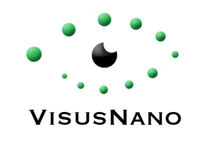 VisusNano is a biotechnology start-up developing a proprietary drug-eluting intraocular lens, which will revolutionise cataract surgery. Cataract, defined as opacification of the lens within the eye, is the commonest cause of blindness worldwide. Cataract surgery is the commonest surgical procedure performed in the developed world. VisusNano’s technology can reduce or remove the three primary risks associated with cataract surgery: (1) intraocular inflammation; (2) infection; (3) opacification of the lens capsule, known as posterior capsular opacification (PCO). PCO occurs in 25% of patients, causes gradual visual loss, and requires further treatment with laser.
VisusNano is a biotechnology start-up developing a proprietary drug-eluting intraocular lens, which will revolutionise cataract surgery. Cataract, defined as opacification of the lens within the eye, is the commonest cause of blindness worldwide. Cataract surgery is the commonest surgical procedure performed in the developed world. VisusNano’s technology can reduce or remove the three primary risks associated with cataract surgery: (1) intraocular inflammation; (2) infection; (3) opacification of the lens capsule, known as posterior capsular opacification (PCO). PCO occurs in 25% of patients, causes gradual visual loss, and requires further treatment with laser.
VisusNano’s technology obviates the need for eye drops after surgery, removing the risk of patient non-compliance. In animals, complications after cataract surgery are more common and more severe. There are lower regulatory hurdles to entering the veterinary market, which would provide early revenue stream while the human product is developed.
Our team – a polymer chemist, two biologists, and an ophthalmic surgeon – have an excellent and diverse skill set , each contributing critical expertise. We won first prize at the 2016 Oxford Biostars competition and have used the £30k prize to fund our initial key experiments. A European patent application was filed in February 2016.
Video available under the following link: www.dropbox.com/s/yojc2y152qh7bit/2016-08-04%20-%20ImagineIF%20VisusNano.wmv
